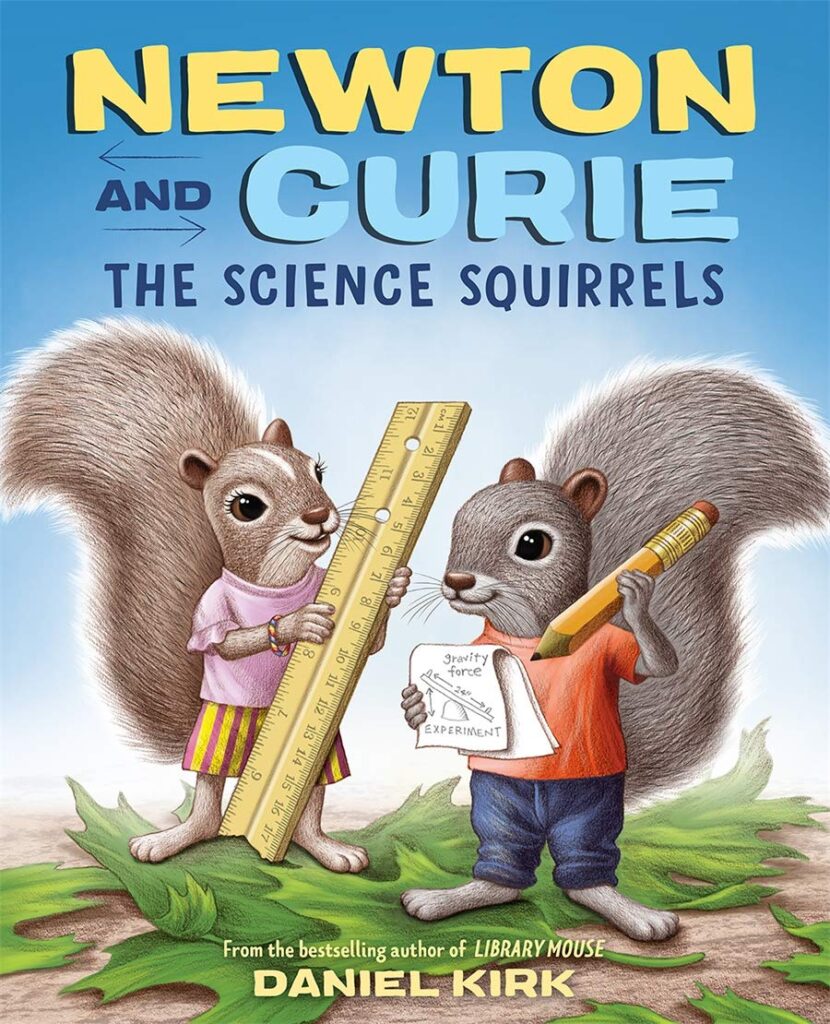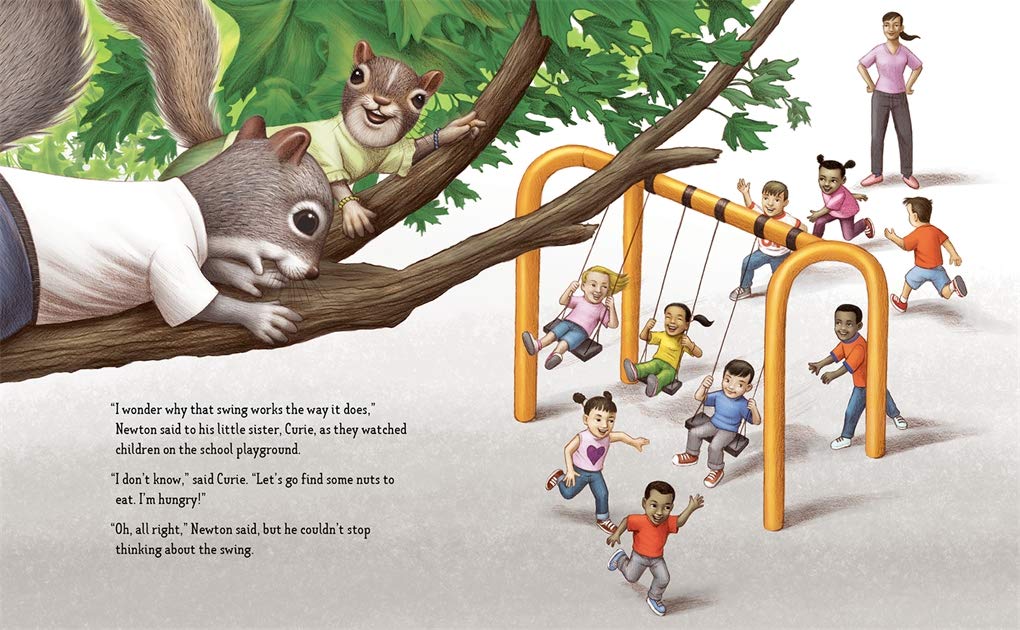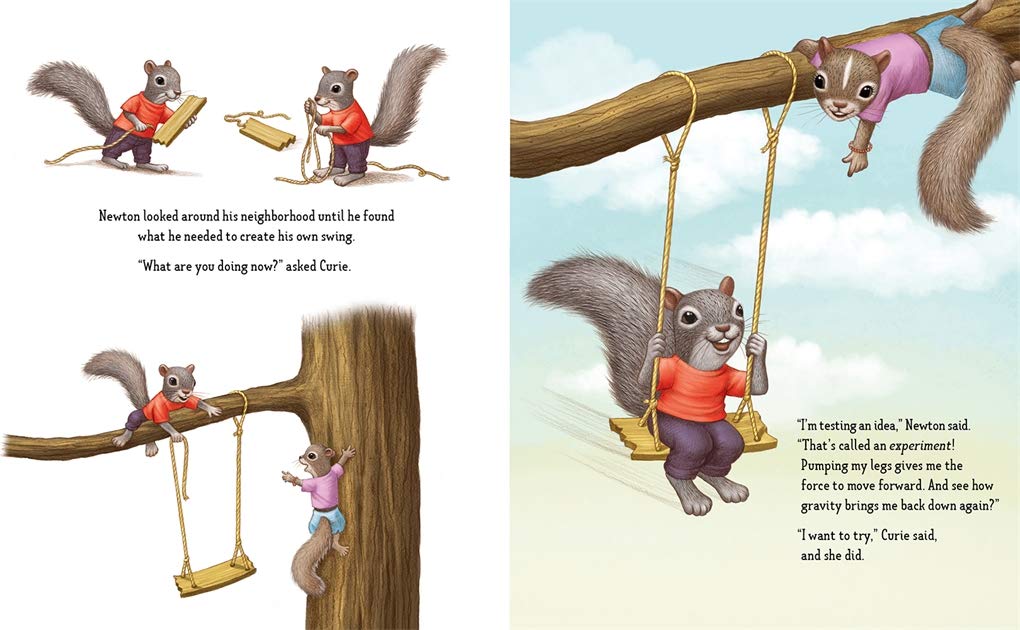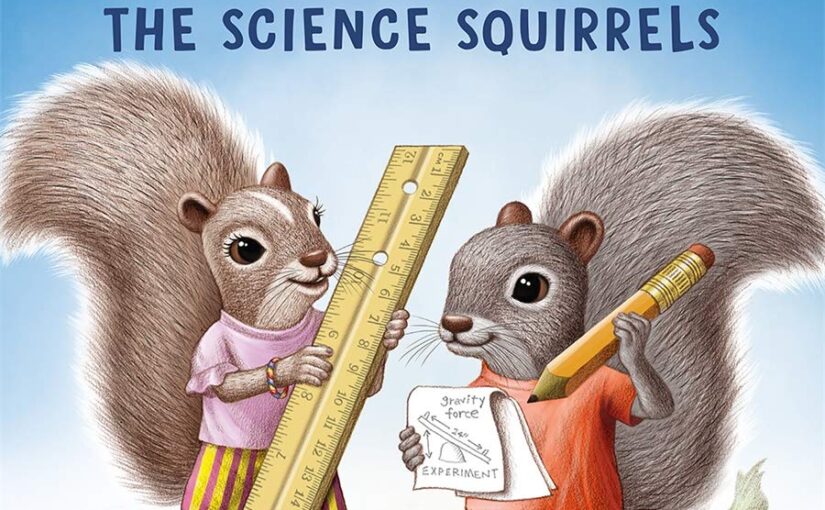As a teacher, I know that math and science are fun. Yet, when I mention this to most elementary-aged students, the vocal minority will groan, and the silent majority just might go along with this trope. When this happens I immediately pivot to a real-life instance that could illustrate whatever math or science lesson I’m teaching that day. Newton and Curie The Science Squirrels is an illustrated book that addresses simple machines that elementary students will learn about in third or fourth grade. The book introduces them to these machines via a soft, pleasant story that those younger ages will be able to understand, with the assistance of two smart squirrels.

Newton and Curie The Science Squirrels is from author/illustrator Daniel Kirk. Educators, parents, and young readers will recognize the look and feel of his work from Library Mouse. Those books are great because they live in a world of soft education. That story is about the teamwork and friendship between two mice as they explore various things. It’s an adventure, but they’re also learning and discovering new things. Sure, the Library Mouse series is educational, but it’s from a curious perspective that invites elementary kids to ask questions and see what’s there, instead of simply presenting facts.
Take that book DNA, add some simple machines, two plucky squirrels, put them in a tree that’s in an elementary school playground and you’ve got Newton and Curie The Science Squirrels. Newton is sitting under a tree and starts to wonder why the apple falls down, but not up. His friend, Curie, joins him as they wonder why the swings don’t back on forth the same way they do when the children are on them.

The next day the squirrels set up their perch by an open window as the teacher is speaking about mass, force, and gravity. This motivates the squirrels to set up their own experiment with an appropriately scaled version of a swing that the two can use. The two see another STEM-minded lesson and get more comfortable by actually sitting on the window sill so that they can get a better view of the lesson.
In one lesson they see a teacher talk about a wheel, pulley and rope that allows you to lift heavy things with greater ease. Shortly after learning that their bird friends have a major problem because they’re unable to lift their nest and eggs back into the upper branches of the tree from which they fell. Can our two squirrels help their feathered friends?

The illustrations in the book have lots of movement and gently tell the story from the squirrel’s perspective. They, as well as the squirrel’s environment and things that they use for these simple machines are large and in charge. The text in Newton and Curie is appropriate for most fourth-grade students to be able to read a majority of the book. Ideally, it’s a read-along book for those early elementary students to enjoy before they formally discover the simple machine concepts in their science classes.
Newton and Curie is an illustrated book that can inspire curiosity, and some young readers will immediately take to it. It is a soft entry into STEM books that will also draw those non-STEM kids through the squirrel’s adventure. Those audiences will need some great story-telling, read-along assistance from the adult reader, but providing enthusiasm behind a book this charming will be as natural as falling off of a log.
Newton and Curie The Science Squirrels is by Daniel Kirk and available on Abrams Books for Young Readers.
There are affiliate links in this post.





 Facebook
Facebook Twitter
Twitter Flickr
Flickr GooglePlus
GooglePlus Youtube
Youtube